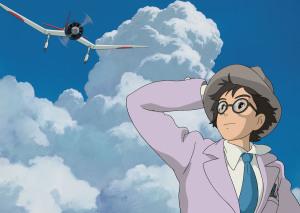 I finally had a chance to watch The Wind Rises, the last film by famed animation director Hayao Miyazaki, His films are always filled with beauty, wonder, and a desire for simplicity, and they are considered masterpieces of animation for good reason.
I finally had a chance to watch The Wind Rises, the last film by famed animation director Hayao Miyazaki, His films are always filled with beauty, wonder, and a desire for simplicity, and they are considered masterpieces of animation for good reason.
What I didn’t expect going into this final film was how grounded it was. Normally, Miyazaki’s films deal in fantastical worlds, sometimes with spirits and monsters, other times with magnificent flying contraptions and imaginative surroundings. The Wind Rises, however, takes place in pre-war Japan and follows the life of Jiro, a near-sighted aircraft engineer based on a real-life man who longed to create beautiful planes.
I fell in love with his movie.
First, it’s beautiful. Though the story probably could have been told in film, I doubt film could have conveyed the beauty of Miyazaki’s animation. By the end of the opening scene, which shows a young Jiro flying over the countryside, I was hooked. (And, yes, I’ve always been in love with Miyazaki’s style.)
More than that, though, is the movie’s theme. Beneath the gorgeous scenes of flying and early 20th century Japan is the looming threat of destruction–first, in the form of an earthquake, then in economic depression, then in the approach of World War II and sickness. Despite these events, Jiro is relentless in his pursuit of building a beautiful aircraft, The experience of watching the movie itself is an illustration of its theme, which is summarized in the opening quote: “The wind rises!… We must try to live!”
The wind rises–trouble and war and death come–but we must try to live. And trying to live does not mean passive acceptance but pursuit of the beauty one can add to the world. That’s what impressed me most, I think. Beauty is necessary for life, and this film upholds its worth, even as it could easily be overwhelmed by darkness.
I’m communicating poorly the impression the movie left on me. It is more an experience than words on a page can quite communicate. To some, the movie may come off existential–live in the moment, not caring about the consequences. But that’s not what it said to me.
To me, it says: create beautiful things, even if they fail, even if they’re co-opted and distorted, even if they’re short-lived and doomed. It’s worth it. And as a Christian artist, who believes that beauty reflects God and that beauty can be as powerful as truth in revealing him; as someone who believes that “whatever is true, whatever is noble, whatever is right, whatever is pure, whatever is lovely, whatever is admirable—if anything is excellent or praiseworthy, think about such things,” a movie that not only revels in the working out of beauty in real life, but embodies it in its form, is something very good indeed.